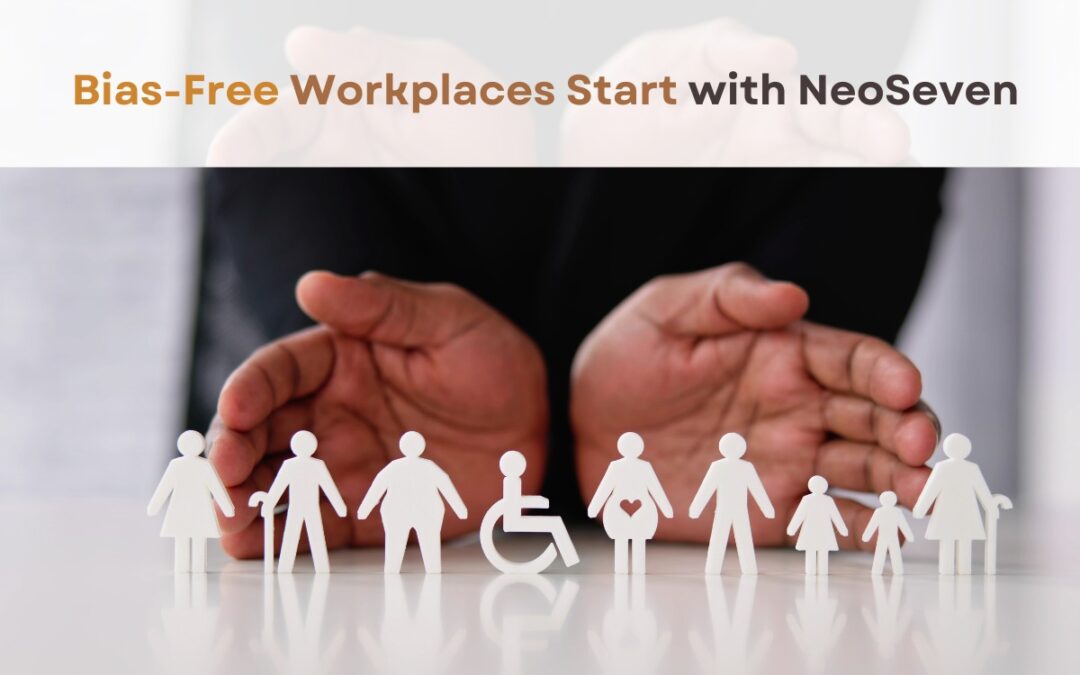Breaking Bias: A Guide to Inclusive Leadership and Beyond
Breaking Bias: Let’s Talk About What’s Beneath the Surface……
What If It’s You?
Ever thought about why you trust some people instantly and hesitate with others? It’s not a gut feeling – it’s your biases talking. Yes, we all have them, and no, they’re not always bad. But when they stay unchecked, they shape decisions in ways we don’t even notice.
For example:
➡️ Nurse means a Woman, and Doctor means a Man
➡️ Most good-looking and well-dressed individual will be the most successful
➡️ Unskilled individuals overestimating their abilities and experts underestimating theirs
Let’s peel back the layers and talk about those invisible forces – because ignoring them isn’t an option anymore.
What Is Unconscious Bias? (Spoiler: It’s Not Just in Your Head)
Imagine entering a meeting room and declaring someone to be “competent” before anyone has had a chance to speak. That’s unconscious bias, a snap decision influenced by everything from your upbringing to the headline you just read. The worst issue? You are doing it without even realizing it.
But here’s the twist: Bias is a survival tool. It helps us categorize the world quickly. The problem? It’s not always right, especially when dealing with people.
Real-Life Example: (Just hear it out)
You’re hiring someone and spot a candidate with tattoos. Your brain whispers, “Not professional.” Pause. What’s that assumption based on? Probably not reality.
Stereotypes: The Gossip Your Brain Believes
Stereotypes are persistent rumors of our subconscious. They overgeneralize and simplify groups into neat little boxes: “Men aren’t good at bargaining,” or “Older employees can’t adapt to tech.” Sounds absurd, right? But stereotypes sneak into our everyday actions. Our communities, friends, families, colleagues all promote stereotypes.
Now let’s flip this:
Imagine a 60-year-old engineer teaching TikTok trends to the marketing team. Surprised? Exactly. That’s what happens when stereotypes fail.
Stereotypes and biases – if not addressed – may start to actively or overly influence how we see other people. These ideas lead to prejudices and discrimination.
The Invisible Masks We Wear at Work
Think about this: You’re in a brainstorming session, and only certain people speak up. Others? Silent. Are they uninterested? Probably not. Workplace culture often rewards confidence over competence.
Fun Scenario: A lady doesn’t speak up in meetings because every time she does, her ideas are dismissed. Meanwhile, someone who sounds more “assertive,” gets praised—even when his ideas aren’t that groundbreaking. Sounds familiar? That’s bias in action.
Now, imagine replacing this with an inclusive environment where everyone gets a say – leadership isn’t about volume; it’s about value.
Bias and Psychological Safety: A Love-Hate Relationship
Psychological safety in teams means people feel comfortable being themselves and they feel confident in their own skin. But bias loves to ruin the vibe. Ever heard someone say, “This is a safe space,” but deep down, you’re not convinced? You don’t need to declare safety, it has to be created, and it is felt by everyone in the room!
How to Spot the Problem:
- Are employees afraid to challenge leadership?
- Does your team avoid tough conversations?
When psychological safety is missing, biases thrive. Begin your journey by investing in unconscious bias training to bridge the gap and create trust.
How E-Learning Platforms Help Crush Bias
What if training wasn’t boring? Enter e-learning platforms – delivering trainings that are accessible, flexible and engaging. Imagine courses that challenge stereotypes with interactive videos, scenarios and eye-opening exercises. You’re not just learning, you are also unlearning a lot!
Example:
A manager shared with us that they were skeptical about DEI e-learning program. But they gave it a try and in a specific hiring scenario simulation, they realized that they favored candidates from their alma mater and that made them acknowledge their biases and understand how it impacted their decisions.
Unconscious Bias in the Wild: A Few Relatable Examples
- The Halo Effect: “She’s great at presentations, so she must be good at everything else.”
- Proximity Bias: “The remote worker can’t possibly contribute as much as someone in the office.”
- Affinity Bias: “We both love cricket – he’ll definitely fit well with the team!”
Sound familiar? These everyday examples show just how sneaky bias can be. But with the right unconscious bias training and mindset, they’re easy to spot and address.
How NeoSeven Redefines Bias Training
NeoSeven isn’t your average DEI consulting firm. We go beyond Unconscious Bias Awareness and help employees with practical applications to drive inclusive behaviors. Our techniques help the brain change behavior by targeting motivation, emotions, behavioral drivers, decision-making, and unconscious perceptions. Our clients have seen how this strengthens collaboration, leadership and performance because of inclusive environment.
Our blended approach with real-world scenarios and interactive learning creates psychological safety in teams. Here’s why we’re different:
- E-Learning Solutions: On-demand, engaging, and device-friendly.
- Unconscious Bias Training: Real-life scenarios, not just theory.
- Inclusive Leadership Programs: Helping leaders engage in critical conversations, build trust, enhance collaboration and innovation.
We believe in creating judgment-free spaces where learning happens organically and online. Ready to make your workplace bias-free? Let’s connect.
Keep Reflecting, Keep Growing
Unconscious Bias training isn’t a one-time fix. It’s a journey of self-awareness, education, and accountability. You don’t need to be perfect, you just need to start. Remember, progress beats perfection every time.

